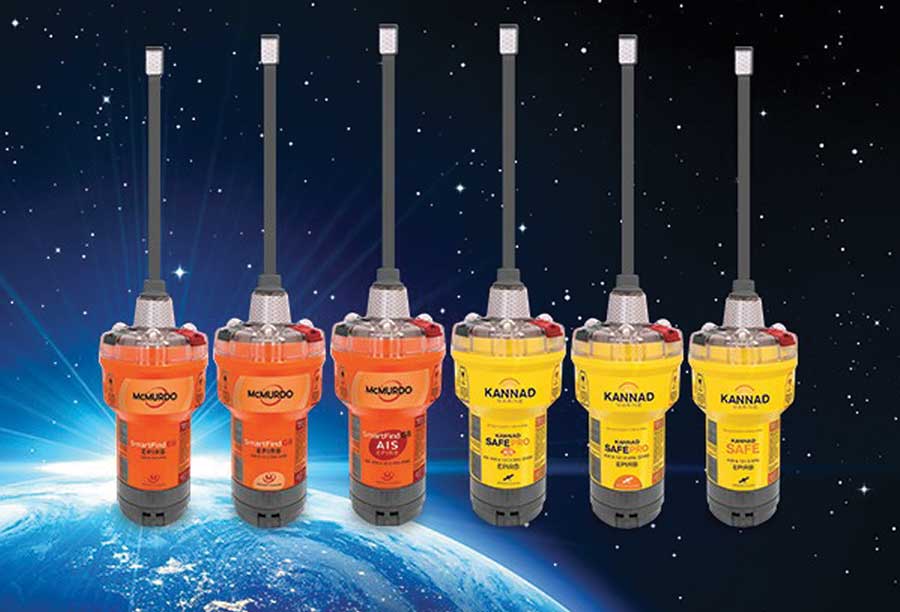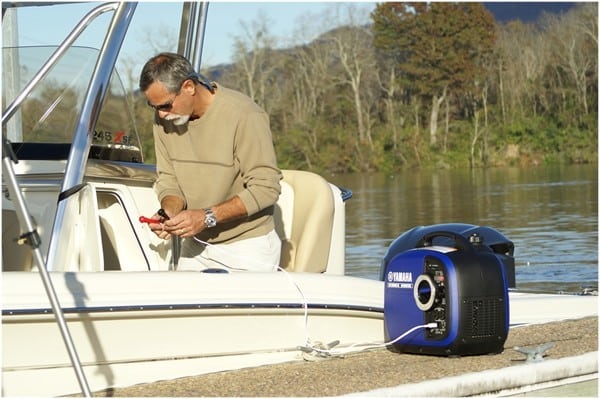McMurdo announces new EPIRB distress beacons that can support each of the four frequencies used in search and rescue.
We are in a day and age in which new technology and products are announced on nearly a daily basis that are designed to keep us safe, whether we’re traveling on land, in the air or on the water. Yet, emergency situations still occur. Search and rescue responders are depended on to react to distress calls, locate persons in life-threatening situations and bring them to safety. All of those actions, however, depend on the responders having received the distress signal in the first place. Many times, the distress signal is dispatched by emergency position indicating radio beacons (EPIRBs), which use specific frequencies.
McMurdo, a provider of emergency readiness and response products and part of the Orolia Group, now offers a new line of EPIRBs that combines multiple frequencies into one product, which speed up the search and rescue process. McMurdo’s SmartFind and Kannad SafePro EPIRBs will be the world’s first distress beacons that can support each of the following four frequencies and converges them into one beacon: 406MHz and 121.5MHz for beacon transmission, GNSS for location positioning and AIS for localized connectivity.
The multiple-frequency capability enables quicker detection, excellent positioning precision, better signal reliability, and consequently, people or vessels in distress can be rescued sooner. Company spokesperson Justine Heeley was quoted in a press release as saying “With this announcement, we continue our long tradition of market leadership and product innovation in the maritime industry. From GMDSS shipsets to AIS man overboard devices to personal locator beacons, and now with these latest EPIRB advancements, we are dedicated to developing state-of-the-art technologies that keep people safe while navigating our world’s waterways.”
Most EPIRBs use 406MHz and 121.5MHz frequencies via satellite communication to provide location and positioning data to search and rescue personnel worldwide whose location could be several hundred miles away. Extra AIS channels on McMurdo’s new EPIRB products—SmartFind G8 AIS and Kannad SafePro AIS—will send position signal information to standard AIS electronic equipment on nearby vessels for complementary local tracking and rescue capabilities.
Additional benefits include expanded satellite connectivity since the EPIRBs have a multiple GNSS satellite constellation receiver supporting the Galileo constellation (when it is completely operational), GPS and GLONASS. The benefit of advanced GNSS data processing produces earlier position recognition and improves emergency site accuracy.
The McMurdo SmartFind and Kannad SafePro EPIRBs are part of a comprehensive search and rescue ecosystem the company offers—distress beacons, satellite ground stations, mission control and rescue coordination systems, and rescue response products. McMurdo builds, integrates and tests products as part of a live search and rescue system. This safeguards greater cohesion between distress signal transmission and reception so that beacon owners are assured that their signals reach search and rescue authorities quickly in order for help to be dispatched.
The McMurdo SmartFind and Kannad SafePro EPIRBs are designed to be 100 percent compatible with the Medium Earth Orbit Search and Rescue System (MEOSAR), the next generation of the Cospas-Sarsat international search and rescue satellite system that has helped to save over 40,000 lives since 1982. MEOSAR will increase the speed and accuracy of beacon signal detection and location with new MEOSAR ground network infrastructure and additional MEOSAR satellites. When fully deployed, a MEOSAR-compatible beacon can be located—within five minutes of signal deployment—to within 328 feet an estimated 95 percent of the time, all without reliance on GNSS. McMurdo currently manufactures about half of the world’s MEOSAR infrastructure and is also leading the design of additional MEOSAR-capable beacons under the European Union’s Horizon 2020 Research and Innovation Program’s HELIOS project.
According to Bruce Reid, CEO of the International Maritime Rescue Federation, McMurdo’s new EPIRB products contribute significantly to accomplishing a unified search and rescue vision. “The convergence of products and systems whether AIS and 406MHz or maritime domain awareness and search and rescue, respectively, will require a comprehensive understanding of the entire search and rescue ecosystem. I look forward to seeing more McMurdo solutions and innovations that will shape the search and rescue industry for years to come,” said Reid in a press release. Airbus, Boeing, the British Royal Navy, the U.S. Coast Guard, NOAA, NASA, and others are among the hundreds of aviation, fishing, government, marine, and military customers around the world that rely on McMurdo products.
INFORMATION:
mcmurdogroup.com













